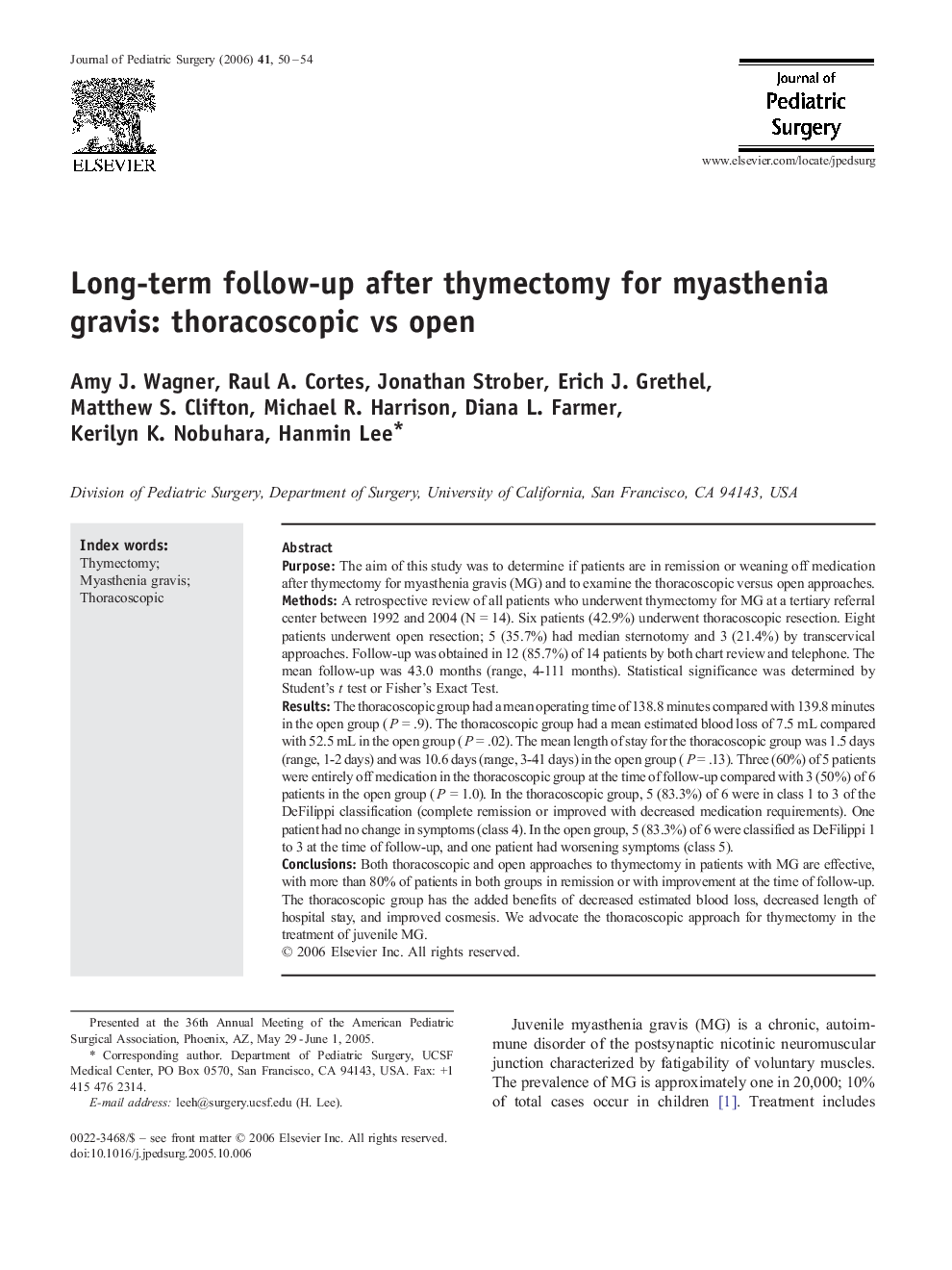| کد مقاله | کد نشریه | سال انتشار | مقاله انگلیسی | نسخه تمام متن |
|---|---|---|---|---|
| 4160774 | 1273852 | 2006 | 5 صفحه PDF | دانلود رایگان |

PurposeThe aim of this study was to determine if patients are in remission or weaning off medication after thymectomy for myasthenia gravis (MG) and to examine the thoracoscopic versus open approaches.MethodsA retrospective review of all patients who underwent thymectomy for MG at a tertiary referral center between 1992 and 2004 (N = 14). Six patients (42.9%) underwent thoracoscopic resection. Eight patients underwent open resection; 5 (35.7%) had median sternotomy and 3 (21.4%) by transcervical approaches. Follow-up was obtained in 12 (85.7%) of 14 patients by both chart review and telephone. The mean follow-up was 43.0 months (range, 4-111 months). Statistical significance was determined by Student's t test or Fisher's Exact Test.ResultsThe thoracoscopic group had a mean operating time of 138.8 minutes compared with 139.8 minutes in the open group (P = .9). The thoracoscopic group had a mean estimated blood loss of 7.5 mL compared with 52.5 mL in the open group (P = .02). The mean length of stay for the thoracoscopic group was 1.5 days (range, 1-2 days) and was 10.6 days (range, 3-41 days) in the open group (P = .13). Three (60%) of 5 patients were entirely off medication in the thoracoscopic group at the time of follow-up compared with 3 (50%) of 6 patients in the open group (P = 1.0). In the thoracoscopic group, 5 (83.3%) of 6 were in class 1 to 3 of the DeFilippi classification (complete remission or improved with decreased medication requirements). One patient had no change in symptoms (class 4). In the open group, 5 (83.3%) of 6 were classified as DeFilippi 1 to 3 at the time of follow-up, and one patient had worsening symptoms (class 5).ConclusionsBoth thoracoscopic and open approaches to thymectomy in patients with MG are effective, with more than 80% of patients in both groups in remission or with improvement at the time of follow-up. The thoracoscopic group has the added benefits of decreased estimated blood loss, decreased length of hospital stay, and improved cosmesis. We advocate the thoracoscopic approach for thymectomy in the treatment of juvenile MG.
Journal: Journal of Pediatric Surgery - Volume 41, Issue 1, January 2006, Pages 50–54